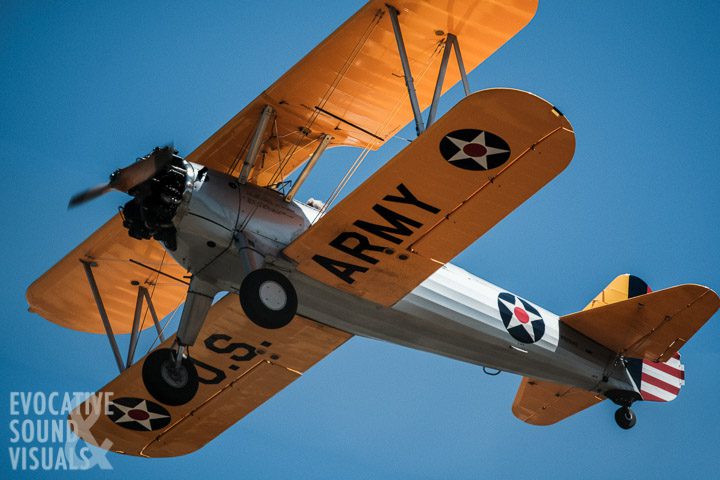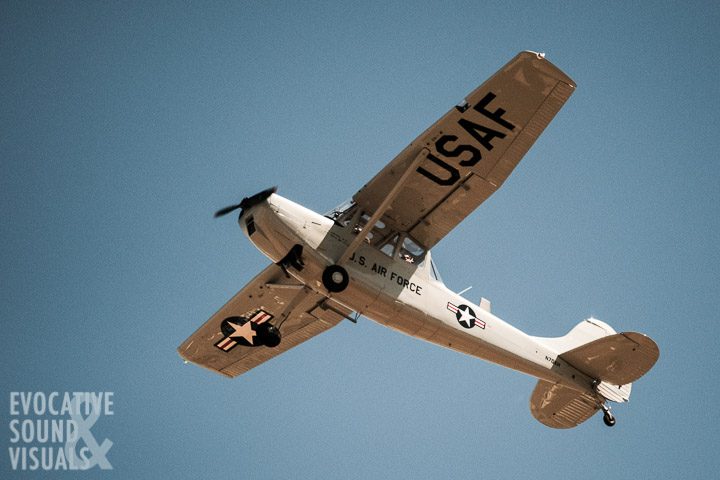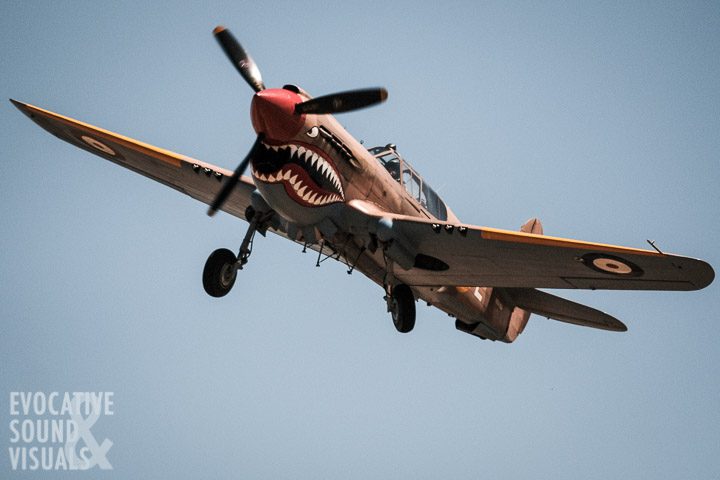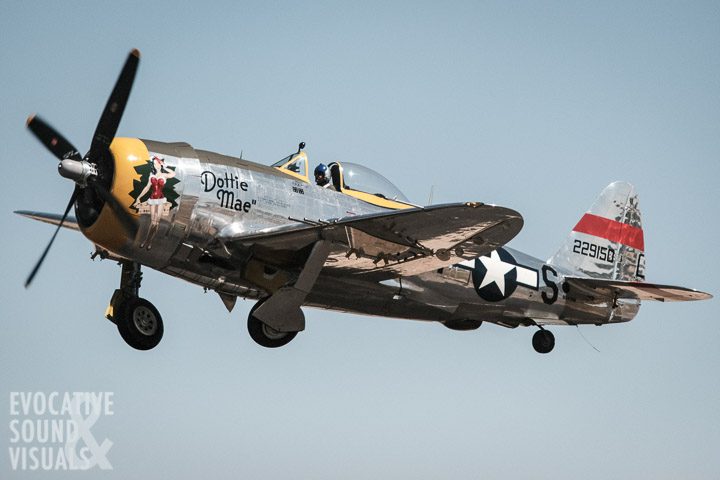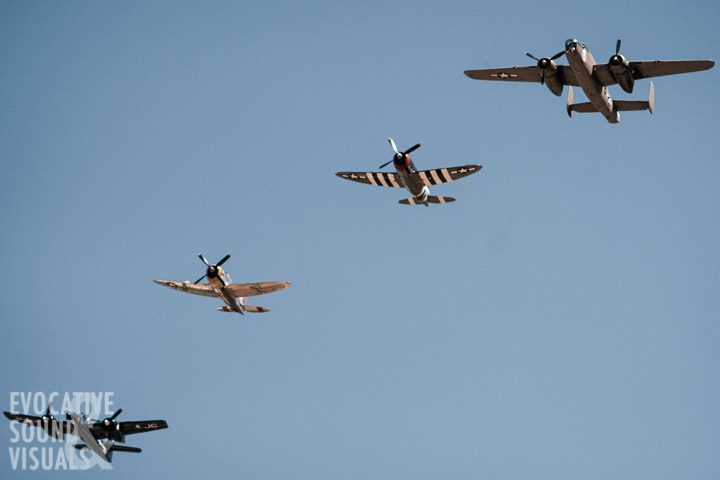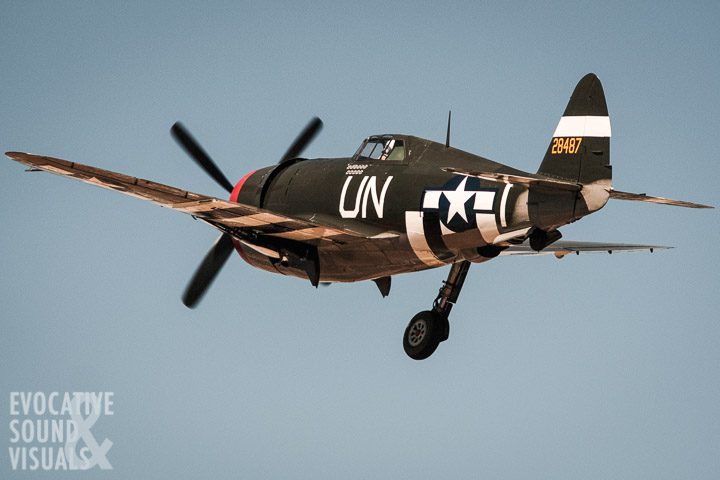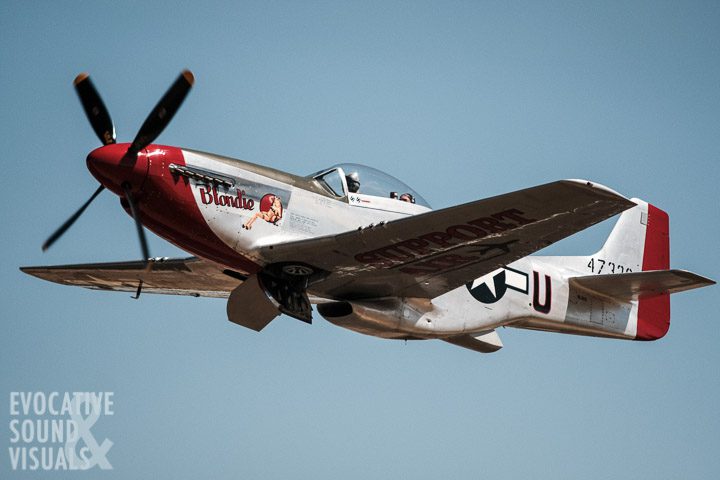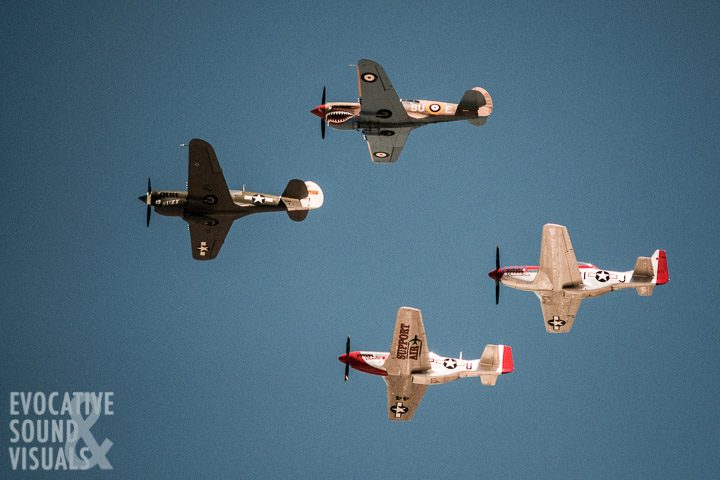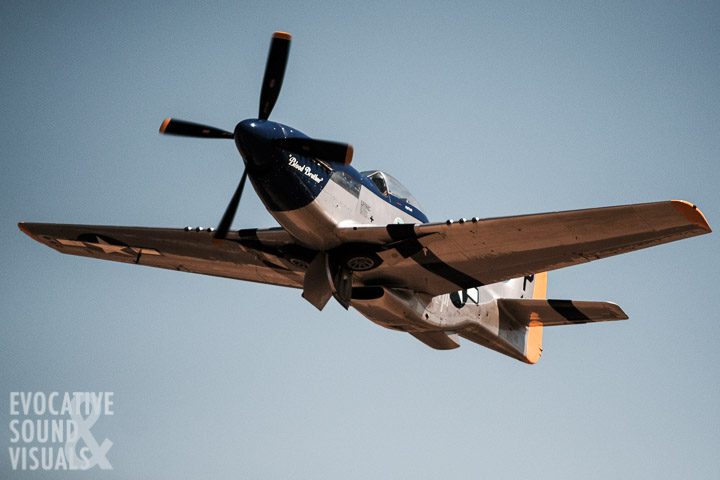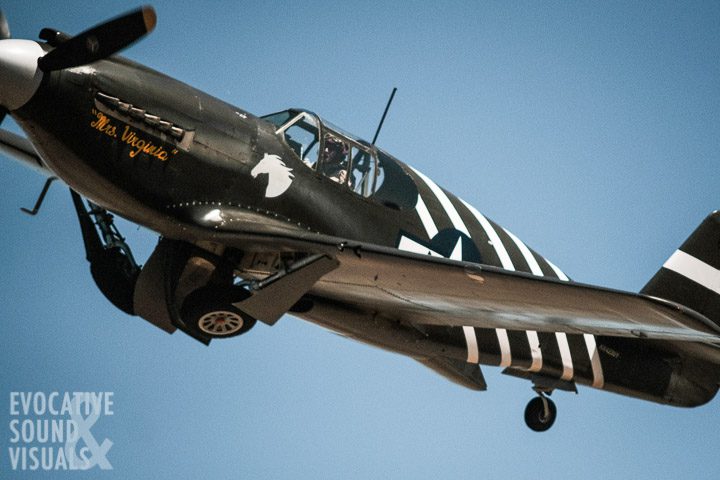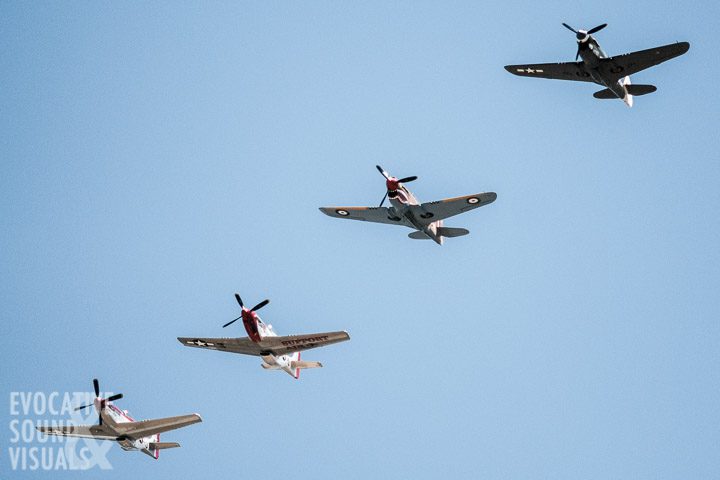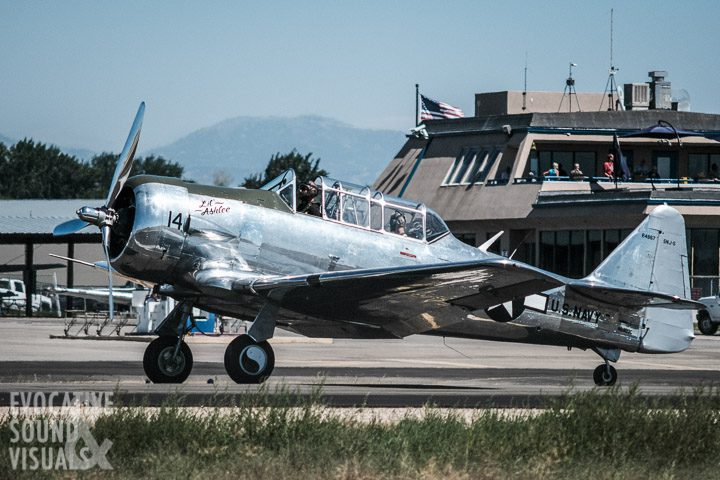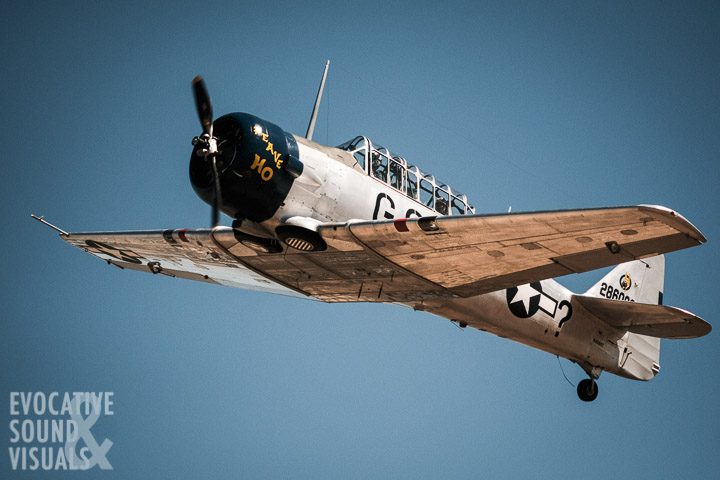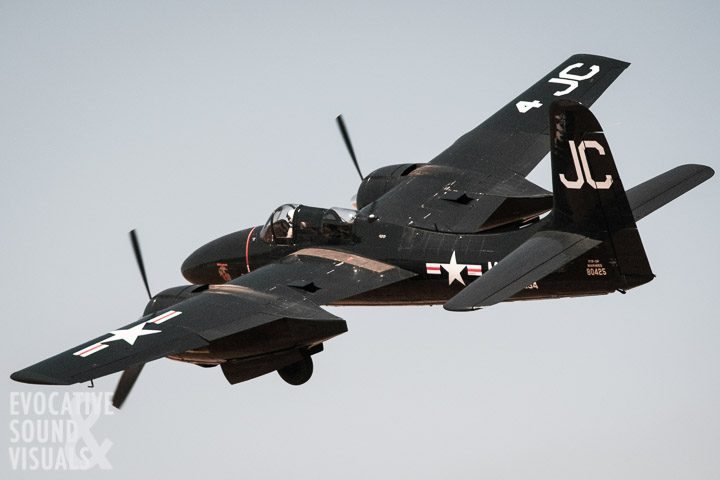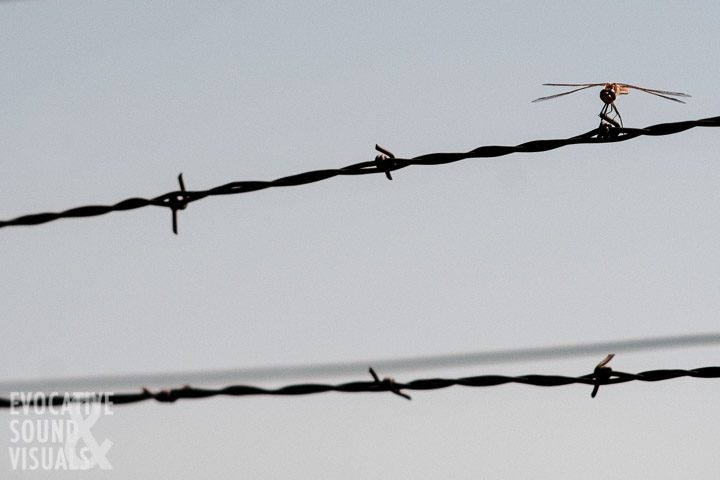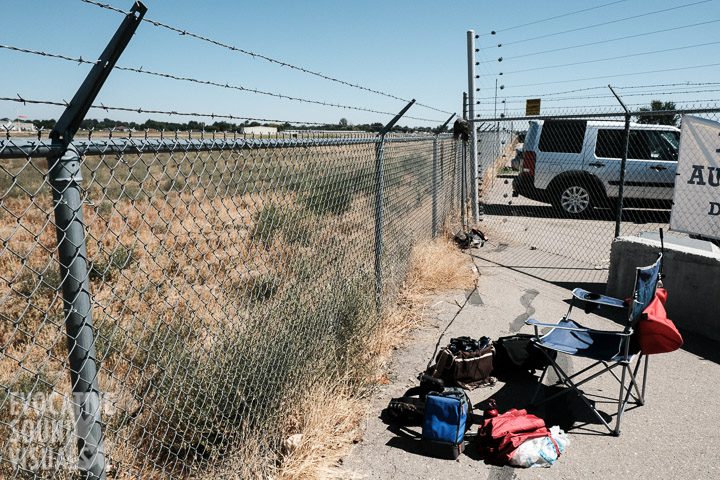Single and dual-engine propeller planes took to the skies during morning and afternoon sessions during the 17th annual Warbird Roundup at Nampa Municipal Airport in Nampa, Idaho on Sunday, August 25, 2019. Leading off the show, a pair of tandem-seat open-cockpit yellow-winged biplanes, including a Naval Aircraft Factory N3N. A Cessna L-19 Bird Dog, a reconnaissance plane, featured by the way in the 1965 film “The Battle of the Bulge”, followed these. The plane is post-WWII, one of the many inaccuracies of that film. Next came single-engine Curtiss P-40’s, two of which are in the museum’s collection, and the “Dottie Mae,” a Republic P-47 Thunderbolt that survived the war, only to crash days later into an Austrian lake, remaining there for 60 years. North American T-6 Texans came next, followed by the streaking sounds of North American P-51 Mustangs, and a Grumman F7F Tigercat. The star of the show was a North American B-25 Mitchell called “Photo Fanny,” grumbling as it lifted off the runway. The bomber was featured in the 2001 film “Pearl Harbor,” launching off the deck of the USS Constellation, a stand-in for the WWII-era USS Hornet.
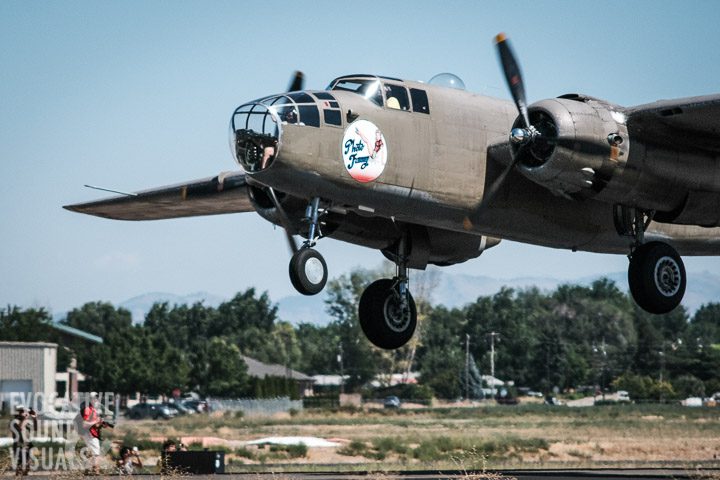
So what did I learn? First off, I didn’t actually attend the airshow. I admit it. Not because I was cheap. The airport would have been a fine place to photograph from. I figured that an announcer talking over loudspeakers, music playing, large crowds and constant camera clicks would ruin any recording possibilities. Instead, I looked at a Google satellite view of the runway days ahead of time, thought about the best places to record away from the interstate and other traffic noise, and started contacting businesses that surround the airfield. One business looked ideal. Luckily, the owner granted permission to park on his property. I was able to record along the fence that runs along the outer edge of the runway, 258-feet away (I checked).
I arrived early. The first order of business was to tamp down clumps of tumbleweeds tangled along the fence. They make an annoying rustling noise if winds kick up. Second, I set up a comfortable lawn chair with its attached umbrella. Sunday’s high was in the ’90s, and there’s no shade in this desert environment. That umbrella made all the difference between staying and bailing.
I used a pair of Line Audio CM3 microphones (in an ORTF mount), placing them on a light stand weighted down by a sandbag. I used a long cable run, long enough where I could turn the pages of the book I was reading, make images of the planes (invaluable as a reference) and break into my zippered lunch bag, all without the mics picking up noise.
I occasionally picked up commentator voices over the loudspeakers, even though I was on the other side of the runway. It wasn’t an issue when the planes were overhead but became one when they were coming and going. I removed these when possible with RX, or deleted the take entirely when the noise was too much. Multiple passes and take-offs saved me here.
I assumed the B-25 would be the loudest plane of the day, but the P-51’s were not far behind. I jotted down gain settings for each set of planes, refraining from adjusting them on my Sound Devices 702 too much. The mics handled these sounds without fail. But I didn’t think to bring anything that would allow me to angle the mics up as opposed to forward. Would this have made a difference? I’m not sure.
Below is a condensed version of the five-hour show, in the order above, with pass bys and overheads (all right to left) overlapping. I’m pleased with the results. If you’re interested in using any of these individual sounds (recorded at 96kHz/24-bit stereo) in your projects, please reach out to me.
